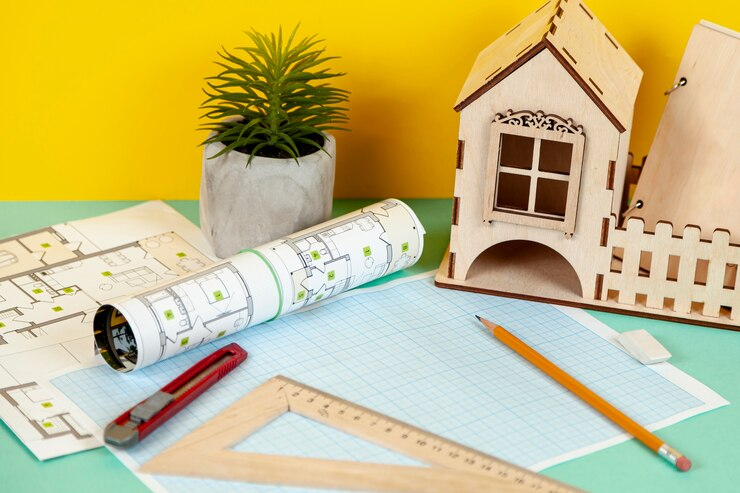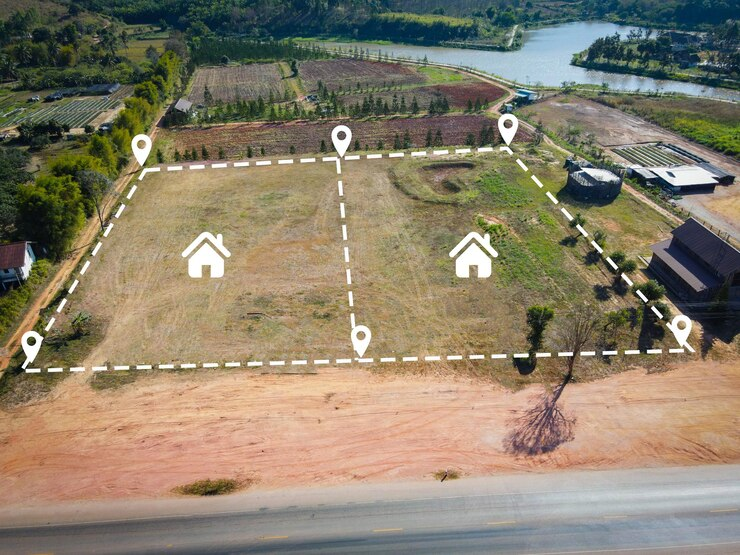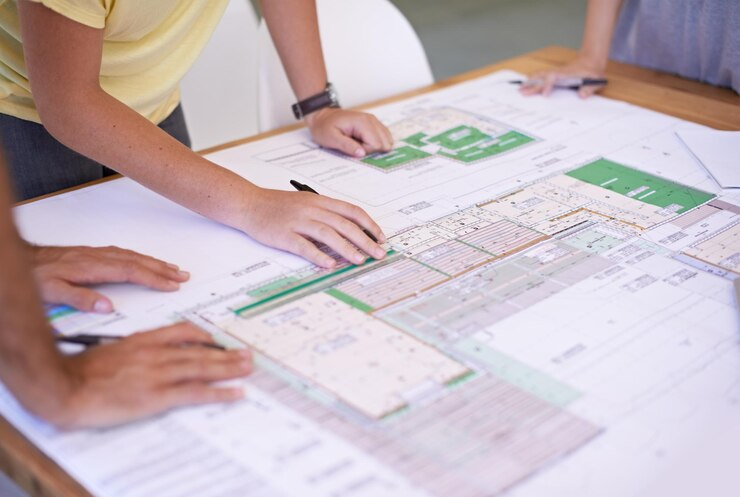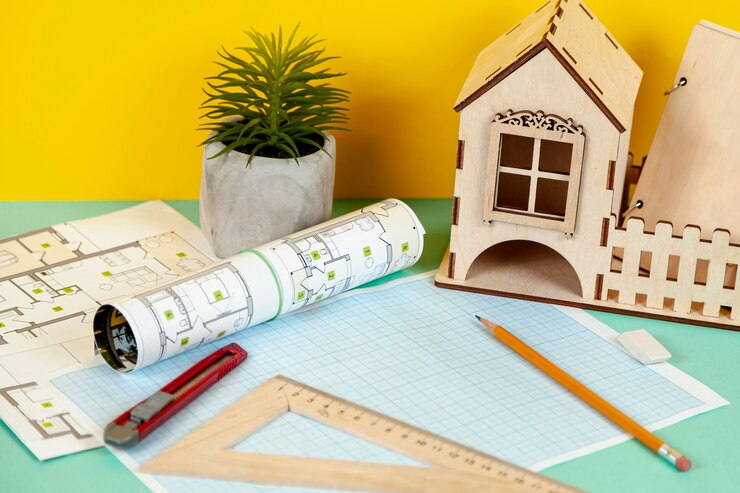
When browsing real estate listings or talking to agents, one term you’ll frequently encounter is “lot size.” At first glance, it might seem like just another detail — a number listed alongside square footage or the number of bedrooms. However, lot size plays a critical role in determining a property’s value, usability, and even its future potential.
Whether you're a first-time homebuyer, a real estate investor, or a landowner considering future development, understanding lot size is key. It affects what you can build, how much privacy you’ll enjoy, how your property is taxed, and how easy it may be to sell in the future. In this guide, we’ll walk you through everything you need to know about lot size — from how it’s measured to why it matters and how to evaluate it effectively.
Understanding Lot Size
Before making any real estate decision, it’s essential to understand what lot size means and why it’s important. This knowledge will not only help you compare properties more effectively but also allow you to see beyond the house itself and assess the land that comes with it.
What Is Lot Size?
Lot size refers to the total area of land included with a piece of real estate. This includes both the land occupied by buildings and any surrounding space — such as a backyard, driveway, garden, patio, or undeveloped areas.
It is one of the primary dimensions used to describe a property and plays a foundational role in determining value, development possibilities, and overall appeal. Larger lots may offer more space for additions, outdoor features, or simply more privacy, while smaller lots may be easier to maintain and more budget-friendly.
In legal terms, lot size is defined in a property’s deed or recorded plat map. These documents detail the boundaries and dimensions of the land, which can be vital if you plan to build or sell in the future.
Lot Size vs. Property Size

It’s easy to confuse lot size with property size, but they refer to two very different things:
- Lot size is the measurement of the entire parcel of land that comes with a property.
- Property size usually refers to the interior living space — the square footage of the house or other structures.
This distinction is crucial for buyers. For example, two houses may each have 2,000 square feet of living space. One may be on a 3,500-square-foot lot, and the other on a 10,000-square-foot lot. Despite identical home sizes, the second property may be significantly more valuable because of the extra land, offering more opportunities for outdoor living, expansion, or resale value.
Additionally, lot size can impact factors like:
- Landscaping options
- Pool installation
- Building accessory dwelling units (ADUs)
- Overall privacy
Lot size and property size both influence a property's market value, but they serve different purposes in valuation, planning, and daily living.
How Is Lot Size Measured?
The way lot size is measured can vary based on geography, purpose, and shape of the land. Most commonly, lot size is measured in:
- Square feet (sq ft) — Standard in the U.S. and parts of Canada
- Square meters (sq m) — Common internationally, especially in Europe and Asia
- Acres or hectares — Used for larger land parcels, particularly in rural or agricultural settings
Simple Measurements for Rectangular Lots
For standard rectangular lots, lot size is calculated by multiplying the width by the depth (or length). For example:
- A lot that measures 60 feet wide and 100 feet deep would be:
- 60 × 100 = 6,000 square feet
- 60 × 100 = 6,000 square feet
This kind of calculation is straightforward and often found in suburban neighborhoods with uniform plots.
Complex Measurements for Irregular Lots
Irregularly shaped lots — those with curves, angles, or multiple sides — require more detailed assessment. Calculating the area of such lots might involve:
- Triangulation techniques
- Official land surveys
- Accessing plat maps, which are official property maps recorded with the city or county
GIS (Geographic Information Systems) and satellite tools are often used by surveyors or local governments to determine the exact size and boundaries of these lots.
Unit Conversions for Global Context
Here are some useful unit conversions:
- 1 acre = 43,560 square feet
- 1 hectare = 10,000 square meters = approximately 2.47 acres
- 1 square meter = 10.764 square feet
These conversions are essential when comparing properties across different regions or reading international listings.
Understanding how lot size is measured and reported can help you avoid confusion when evaluating properties. It also helps you ask the right questions during a home inspection or legal review.
Common Lot Size Measurements

Lot size isn’t just about knowing whether your yard is small or large — it also involves understanding the measurement systems used to describe the land. Whether you’re reviewing real estate listings, assessing tax records, or comparing properties across borders, knowing how lot size is expressed and converted is essential. Let’s explore the most common measurement units used in real estate and how they’re applied.
Square Feet vs. Square Meters
In the United States and a few other countries, lot sizes are typically measured in square feet (ft²). This unit represents the area of a square with sides that are one foot long. Most U.S.-based real estate websites, such as Zillow or Realtor.com,Most U.S.-based real estate websites list properties with land size and home size both in square feet.
Meanwhile, in most of the world — including Europe, Canada, Asia, and Australia — the standard unit of measurement is square meters (m²). This reflects the area of a square where each side is one meter long.
If you’re comparing properties internationally or reviewing listings in metric-based regions, you’ll need to convert between the two systems:
- 1 square meter ≈ 10.764 square feet
- 1 square foot ≈ 0.093 square meters
Here’s a quick comparison table:
Square Meters (m²)
Square Feet (ft²)
50 m²
538 ft²
100 m²
1,076 ft²
250 m²
2,691 ft²
500 m²
5,382 ft²
This distinction becomes especially important for investors or buyers comparing real estate across multiple countries, where failing to convert correctly could lead to misunderstandings about land size and value.
Acres and Hectares Explained
When dealing with larger pieces of land — especially in rural, agricultural, or commercial zones — you’ll often see land area measured in acres or hectares rather than square feet or meters.
What Is an Acre?
An acre is a unit of land area commonly used in the United States and the UK. It equals 43,560 square feet, or roughly 4,047 square meters. To visualize it, imagine a square that is about 208.7 feet on each side.
You’ll often encounter acres when buying farms, ranches, or large development sites. For residential buyers, 1-acre lots provide ample room for estate homes, guest houses, swimming pools, and even private orchards.
What Is a Hectare?
In countries using the metric system, larger land parcels are typically measured in hectares. One hectare is 10,000 square meters or approximately 2.47 acres.
Here’s a quick conversion:
- 1 acre = 0.405 hectares
- 1 hectare = 2.47 acres
This unit is especially common in agricultural or forestry-related land listings. For instance, farmland in France, Brazil, or Indonesia will usually be expressed in hectares rather than acres.
Quick Reference Chart
Unit
Metric Equivalent
Imperial Equivalent
1 acre
~4,047 square meters
43,560 square feet
1 hectare
10,000 square meters
~107,639 square feet / 2.47 acres
Knowing these conversions allows you to interpret listings accurately, especially if you’re browsing global property markets or making cross-border investments.
Visualizing Lot Sizes with Real-World Examples
Even when numbers are given, it can be hard to visualize exactly how large a specific lot size is. That’s where real-world comparisons help. Let’s break down some common lot sizes and compare them to familiar spaces:
- 500 square feet – About the size of a one-car garage.
- 2,000 square feet – Roughly equivalent to a small retail store or a spacious two-car garage.
- 4,000–5,000 square feet – Common size for starter homes in urban or dense suburban areas. Enough for a small front and back yard.
- 7,500–10,000 square feet – Standard suburban lots. Suitable for a single-family home with a good-sized backyard.
- 1 acre (43,560 square feet) – Almost the size of an American football field (without end zones). Enough space for a house, pool, and additional structures.
For international reference:
- 100 square meters – A cozy apartment or bungalow footprint.
- 500 square meters – A decent-sized urban lot in many European cities.
- 1 hectare (10,000 m²) – Picture 1.5 soccer fields side-by-side.
Understanding these physical comparisons can make it much easier to imagine how a piece of land might feel in person, which is especially useful when browsing online listings or buying property remotely.
Why Lot Size Matters

Lot size isn’t just a number on a property listing — it has real-world implications that affect everything from your lifestyle to the long-term value of your investment. A property’s lot size can determine how much you pay in property taxes, what you can legally build, and even how much peace and privacy you enjoy at home. Understanding why lot size matters can help you evaluate listings with a critical eye and make smarter decisions, whether you're buying, selling, or developing land.
Impact on Property Value and Taxes
One of the most significant impacts of lot size is on a property's market value. In general, larger lots are more valuable, particularly in suburban or urban areas where land is scarce. Real estate appraisers and agents factor lot size into pricing, especially when comparing similar homes in a neighborhood.
Here’s how lot size can affect value:
- Larger lots can command higher asking prices due to their development potential or premium location (e.g., corner lots, double lots).
- Smaller lots, while easier to maintain, may limit a buyer's options and fetch lower prices, especially in spacious, residential neighborhoods.
Lot size also plays a major role in property taxes. Local governments typically assess property taxes based on a combination of land value and building value. In high-demand areas, land itself may be taxed heavily regardless of what's built on it. For example, a vacant 1-acre parcel in a desirable location could generate higher tax bills than a fully built 0.25-acre lot in a lower-demand area.
Additionally, certain amenities—like garages, pools, or detached guest houses—may only be possible on larger lots, further increasing value and desirability.
Zoning, Building Codes, and Expansion Potential
Lot size directly affects what you can and can’t do with your land due to zoning laws and building regulations. Local municipalities divide areas into zones (residential, commercial, mixed-use, etc.), and each zone has rules regarding:
- Minimum lot size
- Maximum building height
Setback requirements (how far buildings must be from property lines) - Floor area ratio (FAR), which limits the total building size relative to lot size
- Permitted structures and uses (e.g., whether you can add a second dwelling unit or run a business)
A larger lot gives you more flexibility. You may be able to:
- Build a larger home or multi-unit property
- Add an Accessory Dwelling Unit (ADU) for rental income or family use
- Install features like a pool, detached garage, or solar panels
- Subdivide the lot to create and sell an additional parcel (if local regulations allow)
Conversely, a small or oddly shaped lot may restrict your ability to make changes or build additional structures. For example, a narrow lot may not meet the minimum frontage requirements for certain zoning categories, making it ineligible for expansion or subdivision.
Before purchasing a property, especially for investment or renovation purposes, it’s critical to check with your local zoning office. Even a modest increase in lot size may open the door to valuable development opportunities.
Lifestyle Considerations: Privacy, Landscaping, and Space
Lot size doesn’t just impact financial and legal aspects — it also shapes your daily living experience. Whether you prefer urban efficiency or suburban tranquility, the amount of land you own plays a big role in your quality of life.
Here’s how lot size can enhance or limit your lifestyle:
Privacy
- Larger lots typically offer more space between homes, reducing noise and increasing seclusion.
- You may be able to install fences, hedges, or trees to create a private oasis — options not always possible on small lots.
Outdoor Living and Landscaping
- Bigger lots allow for more ambitious landscaping projects, such as:
- Gardens
- Outdoor kitchens
- Fire pits
- Patios or decks
- Families may prioritize large yards for children and pets to play safely.
- Gardeners, hobbyists, and entertainers often seek larger lots for their versatility.
Storage and Parking
- Larger lots can accommodate detached garages, carports, sheds, and even RV or boat parking.
- Smaller lots may rely solely on street parking or offer limited space for outdoor storage.
Maintenance
- On the flip side, larger lots typically require more maintenance. Mowing lawns, managing irrigation, pruning trees, and dealing with drainage all become more intensive as lot size increases.
- Some homeowners prefer smaller lots for their low-maintenance lifestyle, especially in retirement or urban settings.
Ultimately, the right lot size depends on your personal preferences and long-term goals. A growing family might prioritize yard space, while a working professional in the city may favor a compact, low-maintenance lot with easy access to amenities.

Get a no-obligation offer in just a few minutes.





.webp)




.webp)
